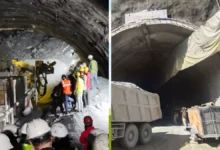Himalayan glaciers are melting fast; could induce water supply issues in Asia

Himalayan glaciers are disappearing fast, and that could bring about serious water supply problems to millions of people in India and the rest of Asia
If you thought the Himalayas would continue to stand tall as ever for years to come, you need to seriously think again. Going by a new study, Himalayan glaciers are fast diminishing and the rate at which they melt would bring about serious water supply problems to millions of people in the Asian region.
It is a known fact that the mountain ranges in the Himalayas boast the third-largest glacier ice presence in the world, after Antarctica and the Arctic. Often termed ‘The Third Pole’, the Himalayas could well lose out on its glacier reserves as time goes by.
It has been found that, over the past few decades, the glaciers in the Himalayan ranges have lost ice 10 times more quickly on average ever since the last major glacier expansion 400-700 years ago. Researchers at the University of Leeds have found that glaciers are diminishing at a faster rate compared to the same phenomena seen in other parts of the world.
Himalayan glaciers have lost 40% of their area
The researchers estimate that glaciers have lost around 40 percent of their area, after having diminished from a point of 28,000 sq km to around 19,600 sq km as of the current day. During this process, Himalayan glaciers have lost between 390 cubic km and 586 cubic km of ice. Due to the melting of that amount of ice, the sea levels across the world have also risen by around 1.38 mm.
Pointing to a human-induced climate change as the reason for this exceptional phenomenon, the researchers have also warned that several millions of people will be subjected to water scarcity. It needs to be noted that India and other Asian regions depend on rivers such as the Brahmaputra, Ganga and Indus for their food and energy requirements. These rivers will see a huge catastrophe descending on them, thereby affecting the people.
Human-induced climate change to blame
More glaciers of the Himalayan mountain ranges are disappearing in the eastern regions, the study pointed out. Noteworthy is the fact that glaciers are disappearing faster where they end in lakes, which have several warming effects.
Human-induced climate change being the main culprit, humankind now needs to act faster to reduce the impact. It is imperative that we find ways to do it, effectively so as to help our rivers live on.



